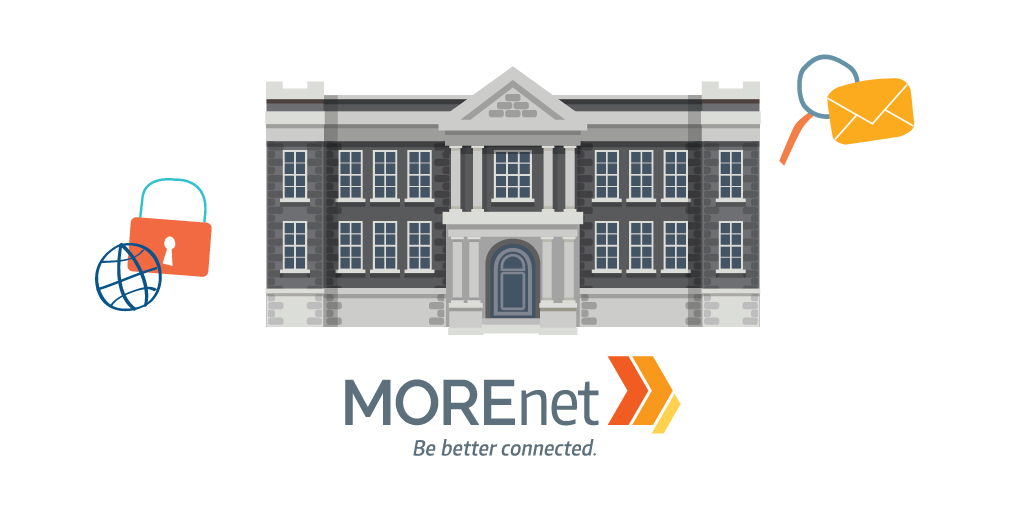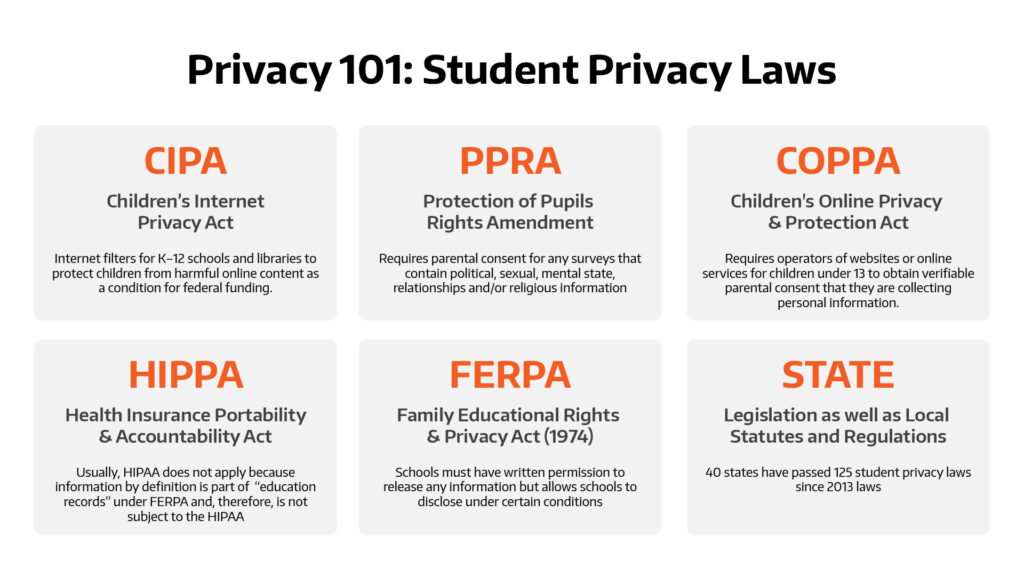
Using technology in the classroom is becoming more and more popular throughout the state and with that comes concerns about students’ privacy both in the classroom and throughout the school. When schools are using technology, student’s data is being collected by both the educators and the technology companies. While data collection is not necessarily a problem, how it is used and protected needs to be explored to keep everyone safe online.
In this post, we outline a variety of free resources available to make the best decision about student privacy in schools and institutions. If you are interested in added assistance, MOREnet has partnered with the Student Data Privacy Consortium to establish the Missouri Student Privacy Alliance (MOSPA). The goal of MOSPA is to encourage conversations between schools and help to set standards of both practice and expectations around student data privacy such that all parties involved will have a common understanding and framework for action. You can learn more about MOSPA and start the process of joining here.
Student Data Privacy is important because there are several laws, both locally and nationally, that dictate what information can be shared, who can view it, and how it can be made available. The first step in creating a student privacy plan is to get familiar with the laws currently in place. The image below is a brief overview of the main laws that affect student data.
In the past, student data used to consist of things like grades, attendance and health records and were primarily restricted to parties within the school that needed to know such information. With the explosion of technology in classroom settings and throughout the school, more and more parties are needing access to the data. Student Information Systems (SIS) and Learning Management Systems (LMS) are growing in popularity and require access to data to ensure they work properly. In addition, collecting information about individual students can help create customized learning plans and notify teachers if a student is falling behind. It’s good to be aware of the guidelines you need to follow to utilize data safely and efficiently.

The Student Privacy Compass website is a great resource to consult when a question arises. The Educator’s Guide to Student Privacy was created to help teachers utilize technology in the classroom while protecting their students’ privacy.
In addition to keeping data safe, it’s important to be transparent to parents and guardians about what information is being collected, how they can access it, and who else can see the information. The U.S. Department of Education provides these Transparency Best Practices for School and Districts to help you communicate about student privacy. We also have this checklist for you to use for PTAC reviews of LEA websites regarding privacy and transparency.
Vetting New Products
As you are adding new software in your classrooms, it’s important to vet them and make sure they are secure and safe to use. The Common Sense Privacy Program offers privacy ratings on hundreds of products and scores them based on their evaluations. Find out more about their rating methods and explore products that have already been evaluated on their website.
iKeepSafe is another website that evaluates products and software to ensure they are compliant with federal and state privacy laws. Explore their approved products before implementing new products in your organization.
We have also created a checklist for Evaluating Edtech Tools for Privacy. Download and print it out as you are evaluating new tools for your school.
The Future of Privacy Forum has released an additional checklist “Incorporating Generative AI Into Your School’s App Vetting Checklist” to help schools vet generative AI tools for compliance with student privacy laws.
Continuous Training
If you’re looking to learn more about student privacy and how to keep students’ data safe, be sure to look at these training opportunities.
Security for Teachers/Student Data Privacy – Handling Sensitive Data, Causes of Unintentional Data Exposure, and Identifying and Reporting Incidents
Common Sense Training Program – Protecting Student Privacy
This is a self-paced course covering student privacy and designed specifically for educators. The course takes approximately 1 hour to complete and is available at no cost.
U.S. Department of Education – Training Resources
There are a variety of training resources available on the StudentPrivacy.Ed.Gov website. Explore their videos, recorded webinars, and online training modules to dive into all things student privacy.
Utah State Board of Education – YouTube Channel
The Utah State Board of Education has a fantastic YouTube Channel available with over 65 videos about student data privacy. It is a great resource if you are looking for quick explanations about laws and rights regarding privacy.
